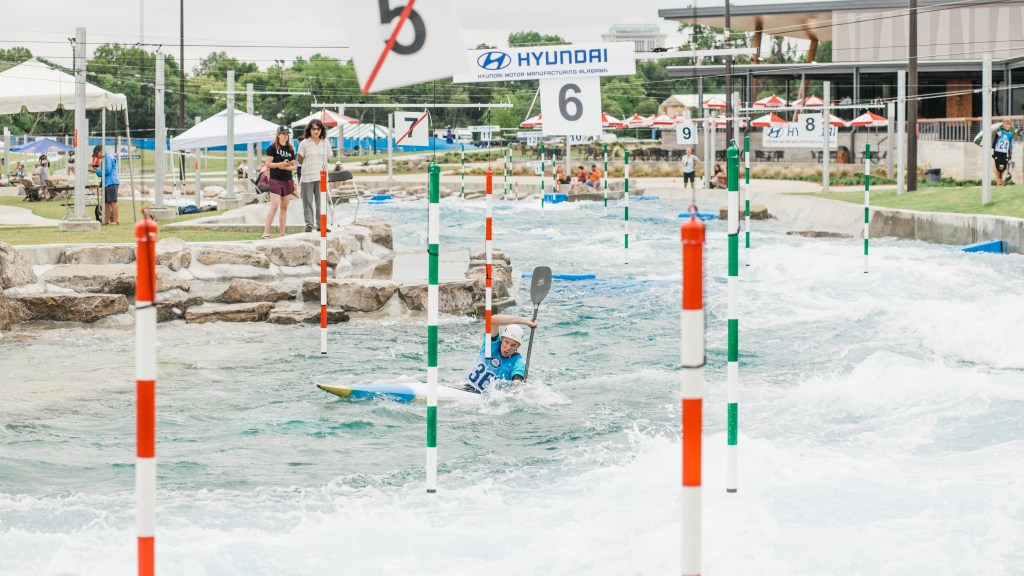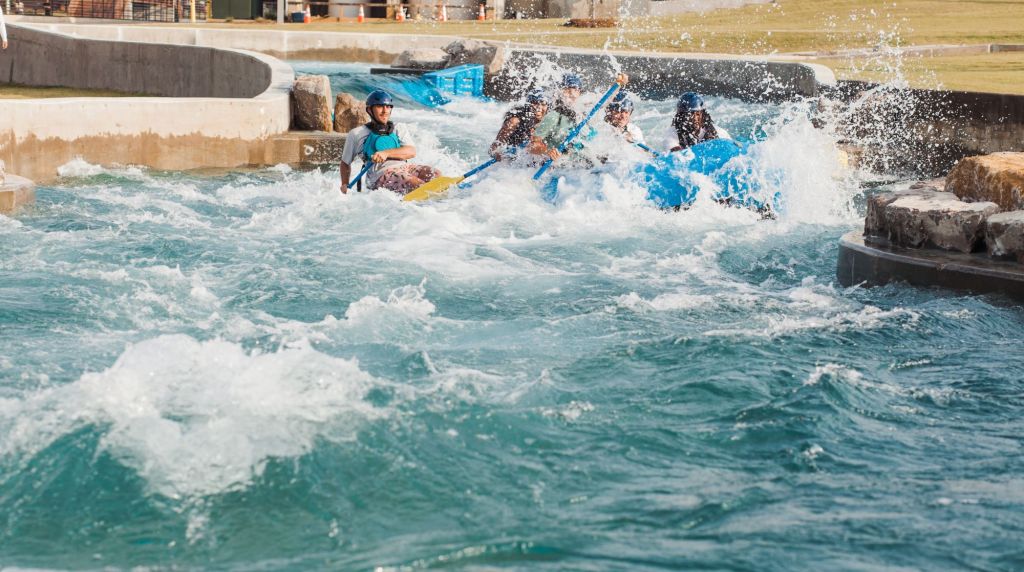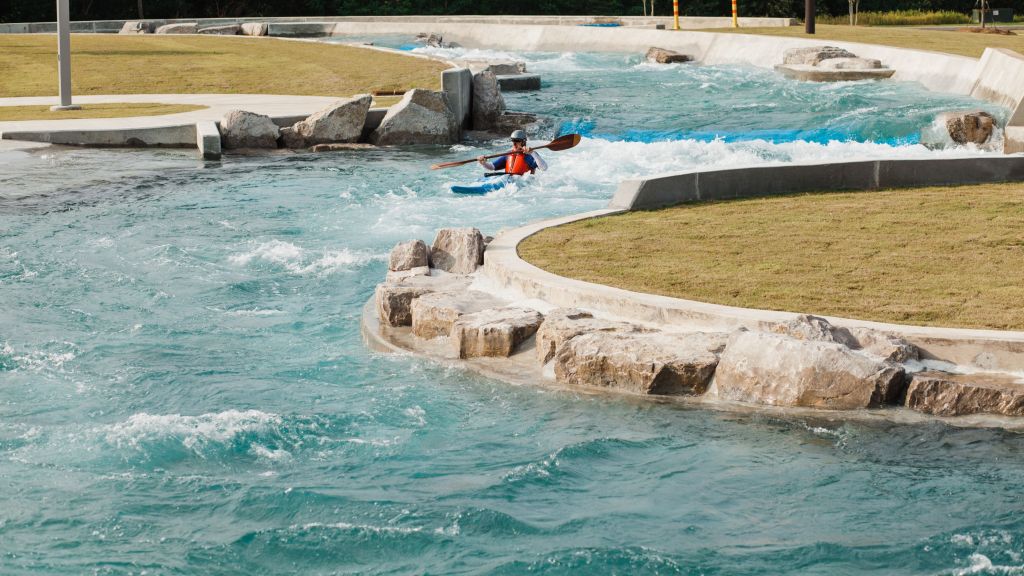With the emergence and growing popularity of non-traditional aquatic venues such as surf parks and manmade lagoons, Montgomery Whitewater seems appropriate for the times.
Manmade whitewater courses provide the centerpiece for this 120-acre outdoor recreation and entertainment complex, set in Montgomery, Ala., with the Alabama River nearby. The city and designers sought to create manmade whitewater that would engage veteran rafters, of course, but also serve as a training ground for those interested in learning. The idea? That visitors can easily come back often to deepen their skills.
But the property also is meant to accommodate a wide range of pursuits, including training, instruction, competitions and swift-water rescue training for first responders, but also non-rafting events and activities such as festivals, team-building, or just gathering and socializing.
The design team answered this call with a site that includes a recirculating whitewater course built to Olympic standards. The whitewater serves as the park’s focal point and, between two separate courses, accommodates users of all skill levels.

A 1,900-foot-long Adventure Channel is designed to mimic a natural river and provide a relaxed Class II whitewater experience, serving as an introduction to the sport for newbies. For those with more experience in whitewater, or relatively new rafters looking to boost their game, there’s a 1,600-foot-long Competition Channel designed to Olympic standards and offering Class II-IV rapids suitable for competitive slalom events and advanced paddling. It was designed to provide a venue for high-level competitions, such as U.S. Olympic Team trials for whitewater slalom events.
The two channels intersect in a lower pond to the takeout or back up the conveyor belt for another run.
A standing wave surf feature provides another watery way to entertain visitors.
A restaurant, outdoor amphitheater, lawn and pavilions provide plenty of areas for events and socializing. Future phases of construction are expected to bring climbing walls, ziplines, ropes courses, and hiking and biking routes, as well as hospitality amenities like a conference center, cabanas, and additional gathering spaces.
Designers sought to integrate the course and park with local wildlife and harken to the nearby Alabama River. Plenty of plantlife throughout the site fits this bill.
Between the various bodies of water, 12 million gallons are constantly on the move. Keeping the water as clean as possible was a team effort. With guidance from engineering firm Cloward H2O, the landscape team graded the area to prevent runoff from collecting in the pond, to minimize the amount of dirt and pollutants that could enter the water. The civil engineers created a drainage system to carry runoff away from the site.

Cloward itself designed a filtration and recirculation system to keep the water clean. Twenty-four high-rate horizontal media filters use activated filter media rather than sand so it captures particulate as small as 1 micron. The company designed the system hearty enough to maintain the desired water quality when running at 50% capacity. When the water gets especially dirty, the system can be adjusted up.
A system called RapidBloc Technology is used to allow operators to adjust and change the water’s course in infinite configurations. By repositioning the large steel and rotomolded polyethylene blocks within the concrete structure, the water will rush and reflect against the surfaces in different ways to create the rapids that are most appropriate for the event or application.
This leaves the possibility of huge amounts of water loss from backwashing. The filters backwash into a large holding tank, placed near the pump room and containing its own filtration and ozone system to clean the water before it’s recirculated. Designers estimate the system saves approximately 14.6 million gallons of water each year that could be lost during filter backwashing. The system reduces the annual backwash water loss by approximately 95% to 480,000 gallons. The holding tank works double duty, also supplying water to make up for gallonage lost to evaporation and other causes. Structures on the site feature materials used frequently in the area, such as steel, red clay brick, concrete and wood.
